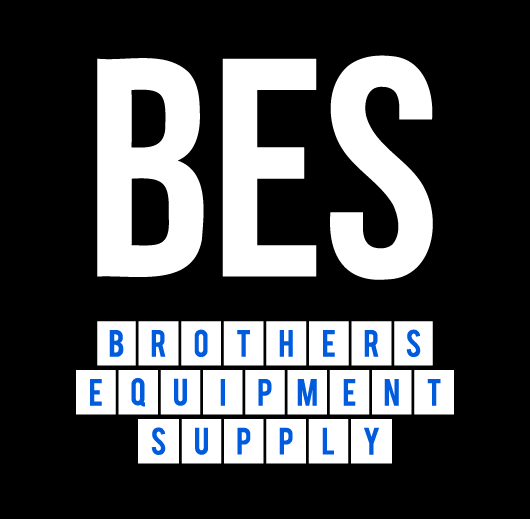
The Science Behind Efficient Drying: A Guide To Equipment
The Science Behind Efficient Drying: A Guide To Equipment
By: Brothers Equipment And Supply
Every homeowner, industry professional, or enthusiast has, at some point, appreciated the role of efficient drying.
But beyond the practical utility, there’s a fascinating science that drives the drying process.
This article delves into the intricate balance between evaporation, thermal dynamics, and the innovative equipment designed to harness them.
Understanding The Basics of Moisture And Evaporation
Moisture is simply water or other liquids present in materials or the air. Its presence can lead to deterioration in quality, mold growth, and structural damage.
Enter evaporation – the process wherein water transforms from liquid to gas, a phenomenon influenced significantly by temperature and air movement.
For instance, according to the US Geological Survey, approximately 80% of all evaporation is from the ocean’s surface.
Thermal Dynamics And Drying
Heat plays an integral role in evaporation.
When materials are heated, their water molecules gain energy and evaporate faster.
Efficient water drying equipment often incorporates heaters to speed up the drying process.
A study by The International Journal of Heat and Mass Transfer found that an increase of just 5°C can hasten the drying rate by up to 30%.
Dehumidification: More Than Just Hot Air
Dehumidifiers serve a dual purpose: they reduce moisture levels and, in doing so, create an environment where evaporation is more efficient.
By drawing in air and cooling it, these devices condense water vapor into liquid, which is then collected or drained.
The Association of Home Appliance Manufacturers notes that dehumidifiers can extract up to 25 liters of water from the air in a single day, depending on the model and conditions.
Air Movers And Their Importance
While heat and dehumidification play crucial roles, efficient airflow is the linchpin of the drying process. Air movers, through high-velocity fans, ensure that saturated air is replaced with drier air.
The Institute of Inspection Cleaning and Restoration Certification recommends using one air mover for every 10-16 linear feet of a room for effective drying.

The Role Of Air Filtration
Drying isn’t just about removing moisture; it’s also about ensuring the environment remains clean.
Air scrubbers and HEPA filters capture contaminants, including mold spores, dust, and allergens.
According to the Environmental Protection Agency, HEPA filters can capture at least 99.97% of particles 0.3 microns in diameter, ensuring superior air quality during the drying process.
Monitoring Equipment And Ensuring Even Drying
Consistency is crucial in drying.
Tools like moisture meters provide real-time data on moisture levels, ensuring materials are neither over-dried nor left damp.
The National Institute of Building Sciences emphasizes the importance of these tools, especially in mitigating mold growth and structural damage risks.
Specialized Equipment For Unique Needs
Not all drying scenarios are the same. Some materials, like documents or electronics, require specialized drying solutions.
Desiccant dehumidifiers, for instance, are optimal for sensitive materials as they maintain low humidity levels.
As the World Archives Project highlights, document preservation after water damage is a meticulous process that relies heavily on precision equipment.
Safety Precautions In Drying Equipment
Every piece of equipment brings with it a set of operational hazards.
Modern drying equipment, however, is built with safety features, such as ground fault circuit interrupters and thermostats, to mitigate risks.
Following the manufacturer’s guidelines and best practices is crucial for safe operation.
Environmental Impact And Energy Efficiency
As global energy consumption rises, there’s an increasing emphasis on making equipment more energy-efficient.
The latest drying equipment models prioritize energy efficiency without compromising on performance.
The International Energy Agency has reported a push in recent years for standards and policies encouraging energy-efficient appliances, benefiting both consumers and the environment.
Conclusion
The intricate dance of science and technology in drying is a testament to human innovation.
As we understand more about the molecular and environmental dynamics of drying, equipment continues to evolve, ensuring faster, safer, and more efficient results.
Whether it’s preserving a cherished piece of art, salvaging important documents, or restoring a home after water damage, the science behind efficient drying remains a cornerstone of preservation and recovery.
If you have any questions about our article, “The Science Behind Efficient Drying: A Guide To Equipment” or need to buy air scrubbers, contact us on LiveChat, social media or at sales@brothers-equipment.com.
Related Posts
Air Movers, What Are They And How To Use Them?
What Are The Top Air Scrubber Benefits And Main Uses?
How To Get Dust Out Of The Air After Construction Work
Air Scrubbers Vs. Air Purifiers: Understanding The Differences And Benefits
Air Scrubbers: Ensuring Air Purity Where It Matters Most
Related Products
